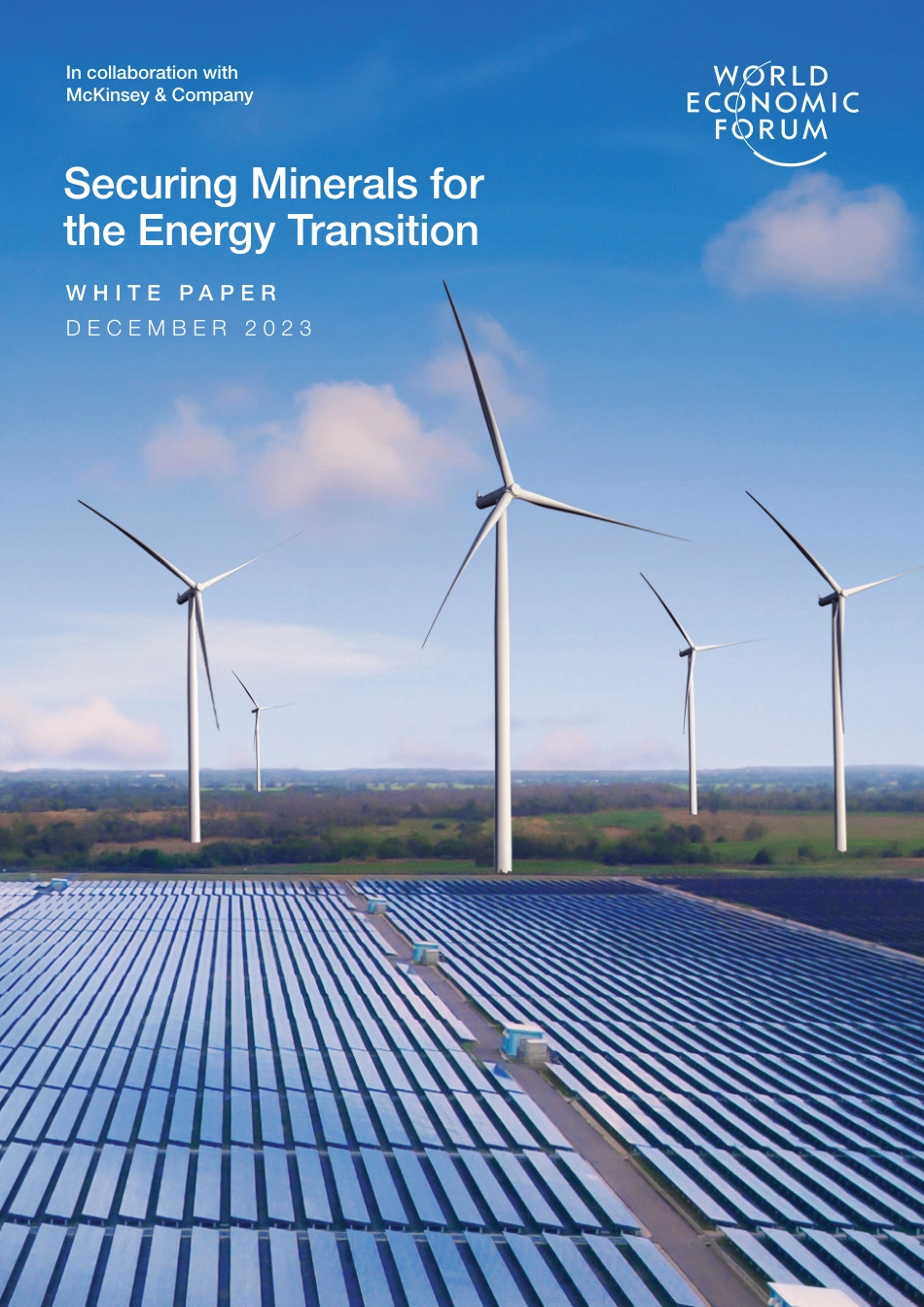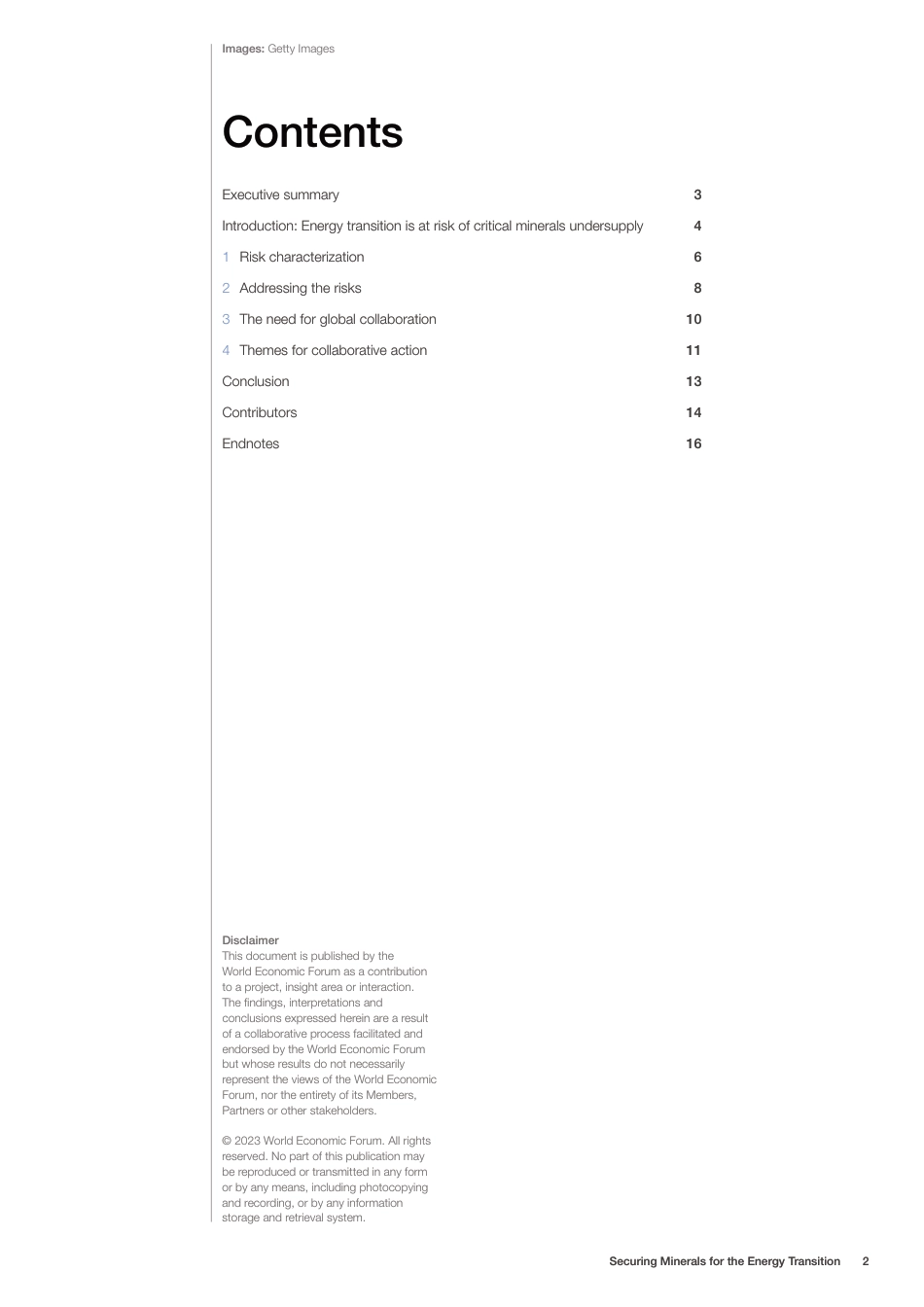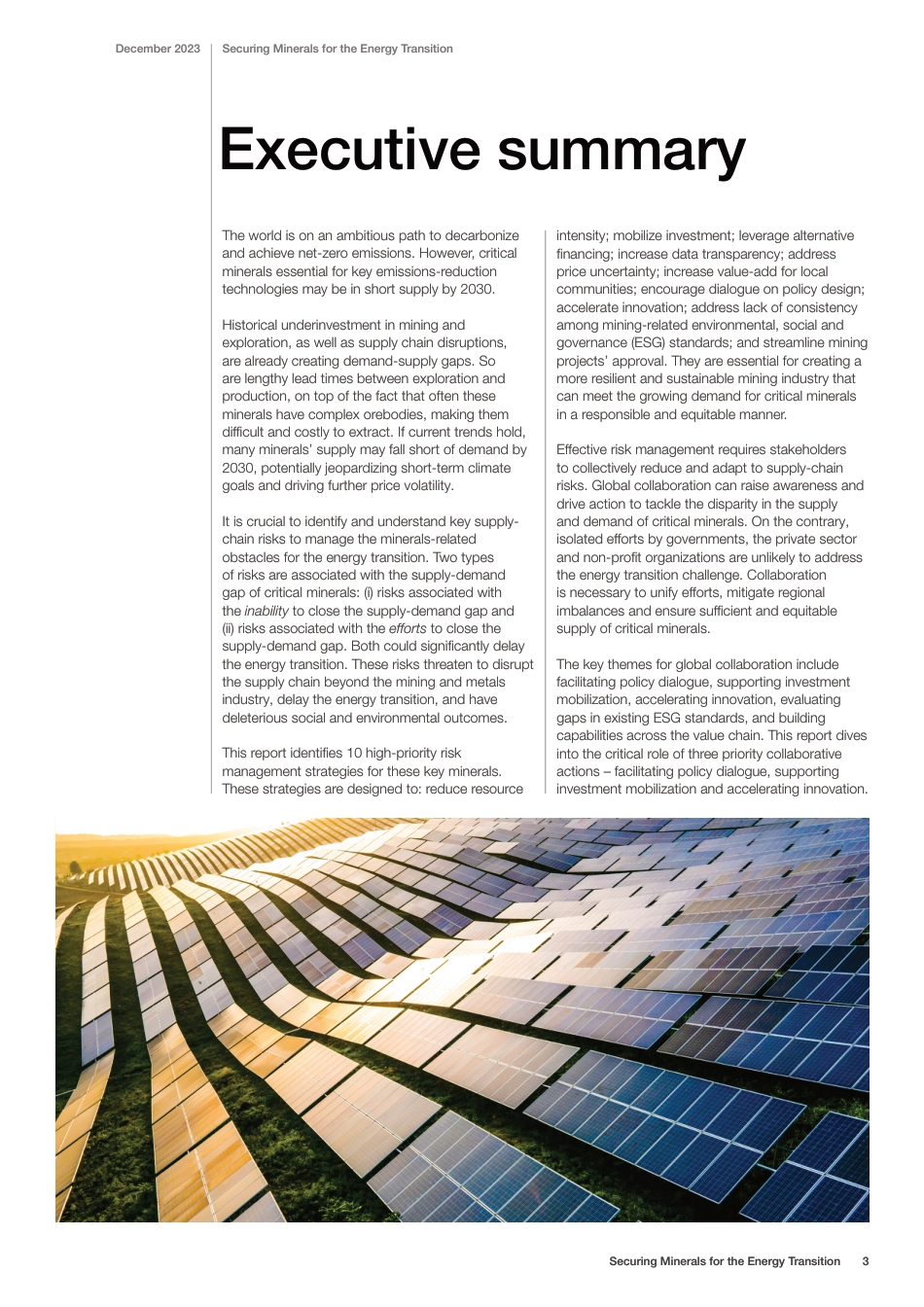Securing Minerals for the Energy TransitionW H I T E P A P E RD E C E M B E R 2 0 2 3In collaboration with McKinsey & CompanyImages: Getty Images© 2023 World Economic Forum. All rights reserved. No part of this publication may be reproduced or transmitted in any form or by any means, including photocopying and recording, or by any information storage and retrieval system.Disclaimer This document is published by the World Economic Forum as a contribution to a project, insight area or interaction. The findings, interpretations and conclusions expressed herein are a result of a collaborative process facilitated and endorsed by the World Economic Forum but whose results do not necessarily represent the views of the World Economic Forum, nor the entirety of its Members, Partners or other stakeholders.ContentsExecutive summary 3Introduction: Energy transition is at risk of critical minerals undersupply 41 Risk characterization 62 Addressing the risks 83 The need for global collaboration 104 Themes for collaborative action 11Conclusion 13Contributors 14Endnotes 16Securing Minerals for the Energy Transition2Executive summary The world is on an ambitious path to decarbonize and achieve net-zero emissions. However, critical minerals essential for key emissions-reduction technologies may be in short supply by 2030. Historical underinvestment in mining and exploration, as well as supply chain disruptions, are already creating demand-supply gaps. So are lengthy lead times between exploration and production, on top of the fact that often these minerals have complex orebodies, making them difficult and costly to extract. If current trends hold, many minerals’ supply may fall short of demand by 2030, potentially jeopardi...



